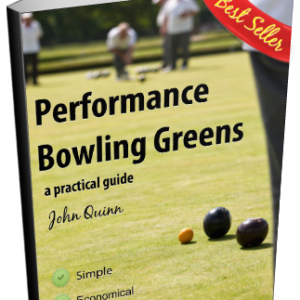A large proportion of Bowling Clubs are currently experiencing a downturn in their fortunes.
The finances at many of these clubs just don’t make sense, yet they struggle on year after year and somehow manage to hang on, even when member numbers are ridiculously low.
This shows a determination and drive by clubs to survive regardless of how hard things get and that is to be applauded.
However, so many of these clubs needn’t be struggling in the way they are now.
Ask any bowling club member; what is the most important attribute for a bowling club to thrive and they will say: A Great Bowling Green
Why is it then that the very industry that claims to be there to support clubs in achieving better quality greens is actually just bleeding the sport dry by continually hard selling products and services to cash strapped clubs when there is very good evidence that these methods are actually detrimental to the green.
How many bowling greens have you played on that are of consistently high performance year in year out?
How many crises, have you experienced on your green in the last 20 years and how many magic remedies have you tried to fix it with? More importantly, how much cash has your club burned through in an effort to reach the Nirvana of a high performance and reliable bowling green?
Well the answer to all of this grief is to think differently about bowling green maintenance.
For too long we have been sold the idea that a few bags of this and a bottle of that will cure all of our problems, but this is Symptom Management in action.
The real causes of poor green performance are the underlying problems on greens perpetuated by following flawed traditions in turf maintenance, such as top-dressing.
This plays us right into the hands of the salesmen, who don’t really want things to get better in the long term.
For this weekend only I have reduced the price of our best selling eBook: Performance Bowling Greens, a practical guide, in order to make sure that as many clubs as possible have access to this step by step plan for improving your bowling green for the long term.
This 100 page eBook:
- Blows away all of the commonly held myths about bowling green maintenance.
- Exposes the expensive greenkeeping “traditions” that run away with cash and actually harm your green.
- Reveals an amazingly simple but powerful formula that you can follow to turn the performance of your green around starting today.
- Details a sustainable and common sense approach to future maintenance that will allow your green to continue improving for ever more.
- Explains what is actually going on under the surface so that you can easily measure progress at each step of the way.
- Shows you how the majority of problems experienced on bowling greens are related very closely to just one common maintenance mistake that nearly every bowling club is making right now.
- Leaves you with a comprehensive plan for your future maintenance, that will not only result in a high performance green, but will actually save the majority of UK clubs money on their maintenance bills.
I’ve included Performance Bowling Greens in a 72 Hour sale where you can also make great savings on all of our current publications.
If you have any questions you know you can always just drop me a line here.

